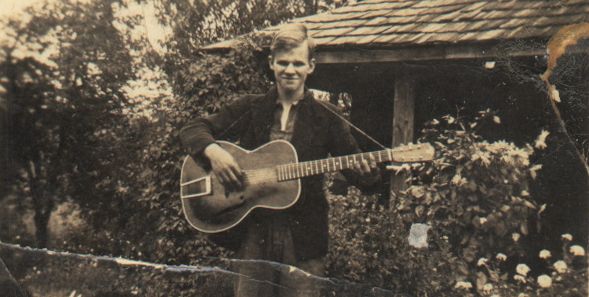Authors:
Historic Era: Era 9: Postwar United States (1945 to early 1970s)
Historic Theme:
Subject:
September 2022 | Volume 67, Issue 4


Authors:
Historic Era: Era 9: Postwar United States (1945 to early 1970s)
Historic Theme:
Subject:
September 2022 | Volume 67, Issue 4

One afternoon in 1960, Ralph Rinzler, a mandolin player and folklorist from Passaic, New Jersey, was visiting the Old Time Fiddler’s Convention in an isolated part of northwestern North Carolina called Union Grove. He was looking for the real thing – unadulterated hillbilly music in a place so remote even today that it’s identified as a “non-functioning county subdivision.”
As Ralph was scoping out the scene, he heard a man playing clawhammer banjo and singing. It was the famous Tennessean, Clarence Ashley, who’d performed at Appalachian medicine shows as a teenager, made his first record in 1928 with the Blue Ridge Mountain Entertainers, and then, in the early 50s, drawn the attention of musicologists in the Northeast like Rinzler when some of his tunes appeared on the classic three-album collection, Anthology of American Folk Music.
Ashley had perfect credentials, from the perspective of urban Yankee folk fanatics like Ralph Rinzler: He’d been a coal miner during the Depression.
Ralph decided to return to the region soon to record Ashley at his home in Shouns, Mountain City, Tennessee – a place with the middling distinction that Daniel Boone had passed through there for one reason or another in 1761.
At the session in Mountain City, Clarence Ashley was accompanied by a blind electric guitar player named Arthel Watson from Deep Gap in the Blue Ridge mountains of North Carolina. Being a purist, Rinzler was only interested in old-timey players on wooden instruments, with no amplification. He wouldn’t record Doc.
A single day can change everything. It did in this case. Ralph was sitting in the back of a pick-up truck with some guys in Ashley’s band, including Arthel. One of them was playing a banjo. At a stop along the road, Watson said “Let me see that banjo, son!” He started picking, and Ralph was stunned to see an electric guitarist playing “the hell out of” Appalachian mountain music.
Rinzler befriended Arthel and decided to promote him at Greenwich Village clubs like Gerde’s and the Gaslight and the Ash Grove in L.A. It was the same time that Bob Dylan had arrived in New York City from Minnesota, mimicking Woody Guthrie and never touching an electric guitar. What an ironic gem that Watson had begun professionally as an electric guitarist and was persuaded by a Jewish enthusiast from New Jersey to go acoustic, while Bob Dylan, within four years, would be excoriated as a Judas for going electric.

Folk fans in America’s big cities